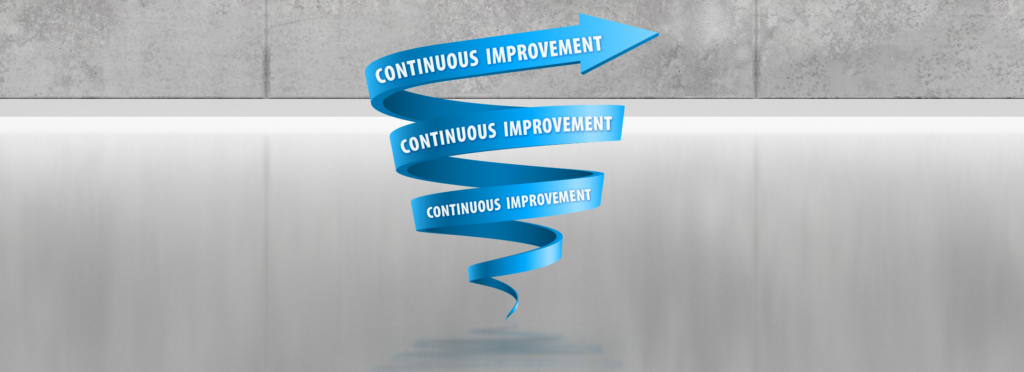Building a Culture of Continuous Improvement Survey: Self-Assessment to Gauge Progress Toward Lasting Cultural Growth & Change

In schools across the country, leaders are being asked to do more with less while navigating the shifting landscape of education. Standards, assessments, and accountability metrics dominate the conversation. But what if real school improvement isn’t about doing more? What if it’s about doing better, together?
OBJECTIVES
- Build a culture where small, team-driven changes lead to lasting school improvement.
- Use data as a tool for learning, not judgment.
- Align systems, practices, and goals to support student-centered change.
That’s the promise of continuous improvement. Not as a buzzword, but as a long-term strategy for changing how schools learn, adapt, and grow.
Start with one challenge. One team. One cycle.
Continuous improvement does not require a districtwide initiative to begin. It starts small. A leadership team identifies a problem worth solving. They try a new approach, measure the results, and reflect together. From there, they refine, scale, or rethink. The goal is not perfection. It is progress.
This approach is not just more manageable. It is more effective. Small, thoughtful changes can add up to deep, sustainable shifts in culture and practice over time.
Small daily improvements over time lead to stunning results.
-Robin Sharma
From Initiative Overload to Purposeful Practice
Too often, improvement efforts in schools are fragmented. A new initiative is introduced, training happens, and then attention shifts before meaningful change can take root. Continuous improvement challenges this cycle. It is a disciplined, collaborative process that helps schools identify problems, test solutions, study results, and refine practices in real time.
At its core, continuous improvement asks three essential questions:
- What problem are we trying to solve?
- What changes might we introduce and why?
- How will we know if a change is actually an improvement?
These are not checklist questions. They encourage reflection, curiosity, and a focus on students’ experiences. They also lay the groundwork for schools to move from compliance-driven work to learning-centered systems.
Culture First, Then Strategy
New tools or policies can help, but lasting change depends on culture: the shared beliefs and habits that shape how people work together. The most effective school improvement efforts are supported by both technical strengths, such as strategic planning and data analysis, and adaptive strengths, such as collaboration, reflection, and shared ownership.
A strong culture of continuous improvement is built when school leaders:
- Create time and structures for collaboration
- Invite multiple voices into planning and decision-making
- Build trust through transparency and follow-through
- Focus on learning, not perfection
This shift often begins with the leadership team. Leaders model the mindset they want to see throughout the building. They show openness, consistency, and a commitment to learning from what is working and what is not.
Building a Shared Vision for Change
A critical step in continuous improvement is developing a clear theory of change. This involves defining a measurable goal, identifying the systems and mindsets that need to shift, and mapping how change will happen over time.
This does not have to be complex. Teams often start by:
- Analyzing student and staff data
- Exploring root causes of persistent gaps
- Using visual tools like driver diagrams to connect actions to outcomes
Want to learn more about root causes? Explore these toolkits to learn more.
Align Systems and Use Data to Learn
Improvement efforts work best when they are embedded throughout the system, not confined to a single initiative or department. That means aligning policies, practices, and people around shared goals. It also means shifting how data is used, moving from compliance to curiosity.
Improvement data should support reflection, not judgment. It helps teams test new approaches, track small wins, and make better decisions based on evidence. When this work is done collaboratively, it can surface blind spots, amplify equity, and build momentum for change.
District and school leaders can support this work by:
- Removing redundant or conflicting initiatives
- Providing space for teams to reflect and share findings
- Aligning evaluation and support systems with improvement goals
Start With Reflection: A Readiness Survey
If your team is wondering whether the conditions are in place to support a culture of continuous improvement, a quick self-assessment can help.
The Continuous Improvement Organizational Self-Assessment Survey, developed by EDC, invites teams to reflect on key conditions such as leadership mindset, collaborative structures, and how data is used. Responses are rated on a continuum from “Not Yet” to “Advancing.”
It is a simple tool that can help you:
- Start important conversations
- Identify bright spots and growth areas
- Set priorities for your next steps
We’ve adapted the survey. Make a copy for your site.
Keep It Simple. Keep It Focused.
Continuous improvement is not about doing more. It is about doing the right work with intention.
Start small. Make time to reflect and adjust. Celebrate what works. Learn from what does not. And most importantly, model the culture of learning you want to grow.
When school leaders approach change with clarity and consistency, they do not just lead improvement. They help their schools become places that improve by design.
Stay in the Loop
Subscribe to Our Newsletter






Responses